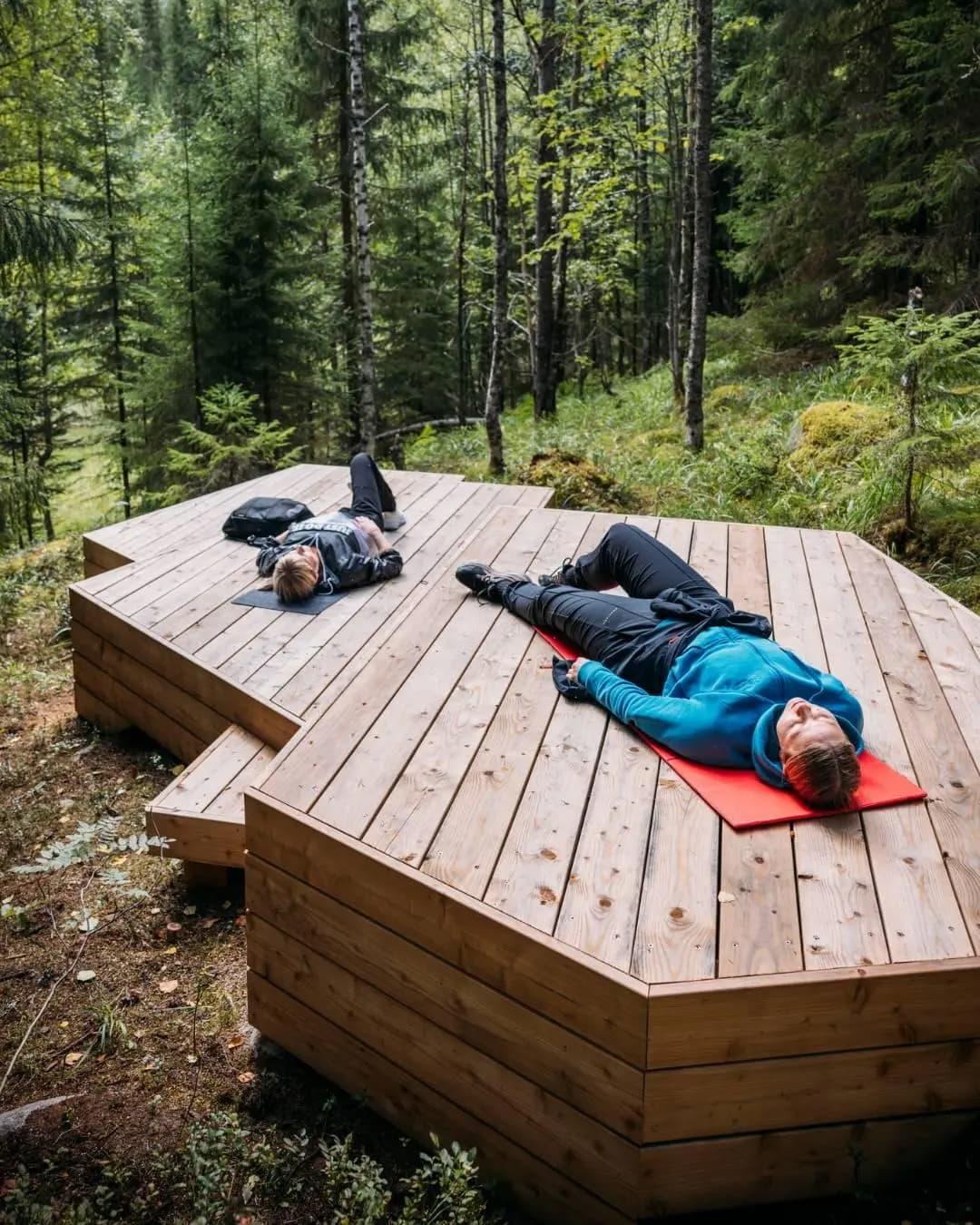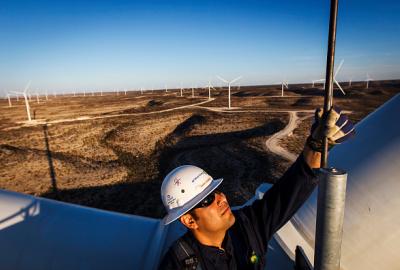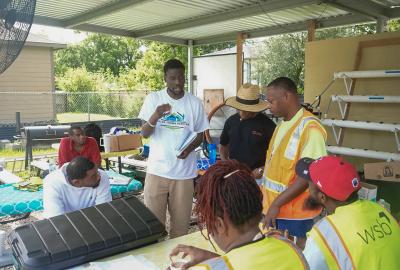In stressful times, nature can help
In June 2019, while working on his family’s 40-year-old tree farm in Monee, Illinois, Tristan Shaw spotted a small Chinquapin oak tree and decided to carry it around with him all day, in a drawstring bag on his back.
“I felt a kinship towards it,” he says. “I have some stress and anxiety from owning my own business and farming. My buddy tree helps puts me at ease, feel like I have someone in my corner, and it always brings a smile to other people’s faces.”
Shaw’s emotional support tree accompanied him around town in suburban Flossmoor, Illinois, to restaurants, bars, grocery stores, the post office and beyond. After eight months, he planted the little oak on his farm and started growing a new buddy tree to carry around.
It’s a cycle he’s continued for six years, helping to reduce his stress and connect more deeply with his community.
A mental health solution embraced around the world
Decades of research from around the world demonstrates that nature is a balm for mental health, even if you don’t carry it around on your back like Shaw.

In Finland — home of the world tree-hugging championship — hospitals have been built next to forests for about a decade, as part of a Health Forest Project funded by the Ministry of Agriculture and Forestry.
The Japanese practice of forest bathing, called shinrin-yoku, which involves mindfully being in nature, has a positive impact on mental health and especially anxiety, according to a meta-analysis of 20 studies. Even simply walking barefoot can facilitate “feelings of nature connectedness and psychological restoration,” according to researchers in the U.K. In Seoul, South Korea, the metropolitan government is building a 7-acre garden in the city that includes a “Barefoot Wellness Trail,” designed with natural materials to promote foot stimulation and circulation.
Doctors in the U.S. and around the world are even prescribing patients time in nature to support their mental health. Nooshin Razani, a pediatrician and researcher in San Francisco, developed the Stay Healthy in Nature Everyday (SHINE) program a decade ago. The program buses patients and their families to local parks once a month accompanied by a doctor and park ranger.
Environmental news that matters, straight to your inbox
“Our patient population has a high prevalence of chronic illness, physical inactivity, mental health disease, social isolation,” says Razani. “A solution to a lot of those problems is the ability to play, to be with family and to be outdoors, and to have social connections.”
Because many of her patients struggle with food and housing insecurity and live in urban areas, SHINE gives them a way to follow her prescription for the outdoors.
Razani found that SHINE reduced stress for parents and increased resilience amongst kids with just one or two park visits a week. Families who were prescribed park visits without SHINE made as many as six visits each week and saw even more benefits. Razani concluded that each unit increase in park visits was associated with a significant and incremental decrease in stress.
“You don’t have to be there at a certain time of day and go with a group, you can go on your own and get the mental health benefits,” she says.
In her clinic, Razani has integrated a question regarding nature access in patients’ electronic medical records, in addition to lifestyle questions about sleep and nutrition.
“We ask every child if they have access to green outdoor spaces to play. If they say ‘no,’ we counsel on the importance and brainstorm where to find a place near them. We also talk about time management for adding it into their day,” says Razani.
A need to invest in nature
The lack of access to green space is a fundamental health issue in communities across the country. P. Grace Tee Lewis, a senior health scientist at the nonprofit Environmental Defense Fund, supports urban communities in their efforts to build healthier local environments.
“People living in these areas are certainly not choosing to live without green space,” she says. “We need to address the lack of parks and trees and infrastructure that is meant to not only be beautiful but also help communities get healthy.”
Shaw’s emotional support tree inspired him to address this greater need. He’s raised funds to plant 500 street trees in Flossmoor, where he noticed that some neighborhoods lacked any substantial tree cover.
“It took me almost two years to get funding for the tree planting, but in many cases, my buddy tree got the conversations going to make it happen,” he says.
“If we want all the health benefits nature brings us, we have to take care of it.”


